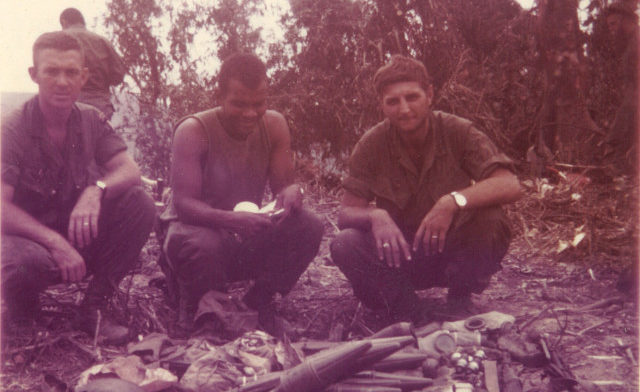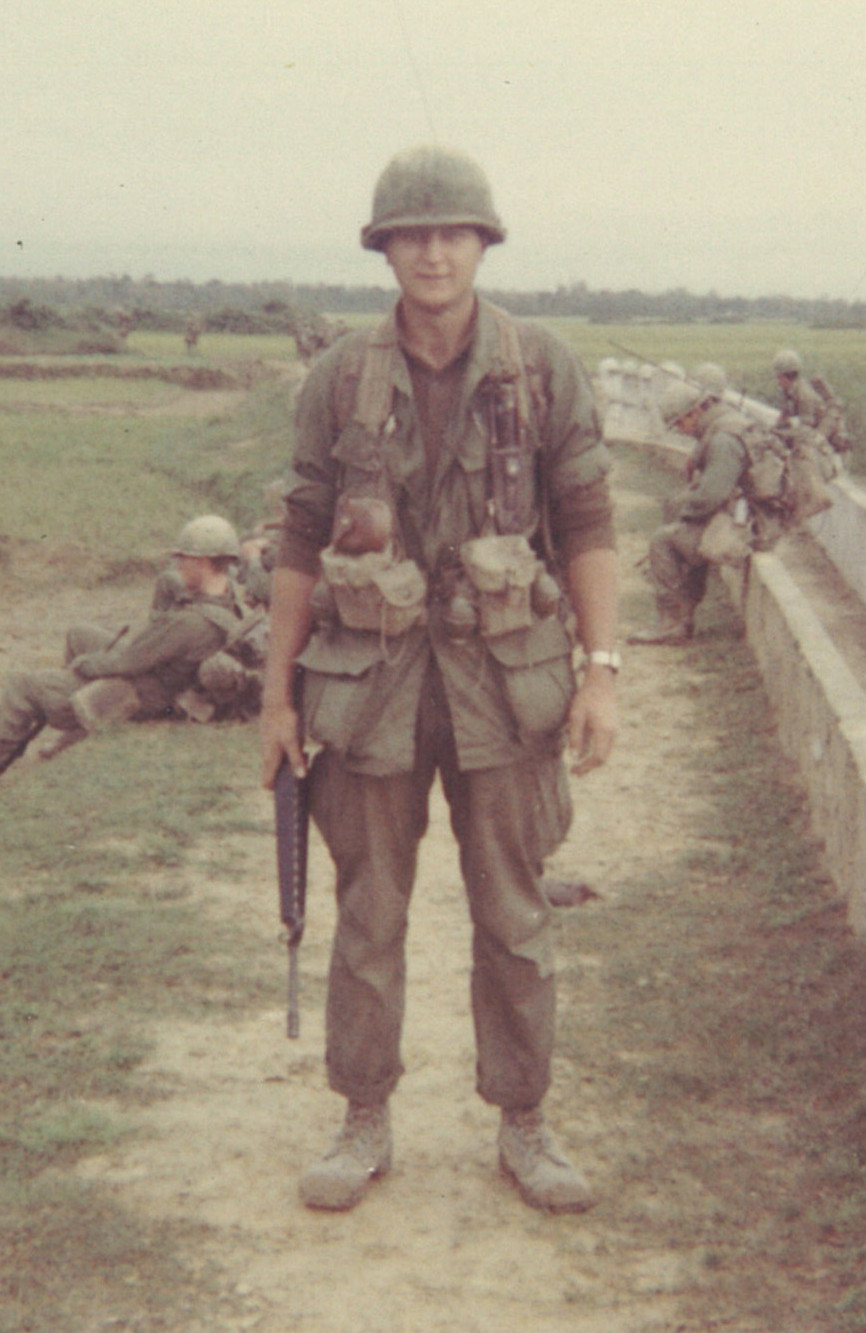The Tet ’68 Battle for Hue: The Road to Hell and Beyond
The year 2018 is the forty-ninth anniversary of the 1968 Tet Offensive. As a young “butter bar” forward observer attached to A Company, 2nd Battalion, 501st Infantry, 101st Airborne Division it was the beginning of my travels on the road to hell and beyond. This road trip began on January 31, 1968 and ended four weeks later at the Western wall of the ancient City of Hue, in the former South Vietnam.
On January 31, 1968, the North Vietnamese Army (NVA) launched the Tet Offensive. Tet, the traditional Vietnamese New Year Celebration, was to be a peaceful truce. Not for the NVA who caught us with our pants down and holding our collective you know what in our hands.
This story is dedicated to the men of the 2nd Battalion, 501st Airborne Infantry (2/501) who fought in the critical Battle for Hue. According to the US Army Center of Military History, “The fight for Hue turned into a slow, grinding campaign of attrition that lasted nearly a month before the enemy was finally defeated.”
I dedicate it to men like SSG Joe Ronnie Hooper and SSG Clifford C. Sims, Delta Company, 2/501, both of who were awarded the Congressional Medal of Honor, SSG Sims posthumously. SSG (later Captain) Hooper was second only to Audie Murphy in the number of awards and decorations with 37 compared to Murphy’s 38.
I dedicate it to the 2/501 airborne infantry Commanders: LTC Richard Tallman, Battalion Commander; Captains Reiss, Alpha Company, Nickels, Bravo Company, Denny Gillem, Charlie Company; 1st Lieutenant Cleo Hogan, Delta Company (the Delta Raiders) and 1st Lieutenant Buch, Recon Platoon leader. All were and still are true leaders of men.
Men like Captain Ken Crabtree, Commander, B Battery, 1st Battalion, 321st Field Artillery, who was my boss, mentor and personal friend. Lieutenant Colonel Crabtree would be killed on April 17, 1984 in a SWAPO guerilla bombing near the Angolan border, SW Africa. But that is another story for another time.
Elements of 101st Airborne Division, the 1st Cavalry Division and 5th Marine Regiment were the major units committed in the Battle for Hue.
The 2/501 ABN INF was attached to the 1st Cavalry Division commanded by Major General Jack Tolson. Hue was considered vital to the NVA because of its “history of Buddhist activism and Communist sympathy.” The NVA felt that Hue was second only to the capitol city of Saigon as a political foothold in South Vietnam. The 90th NVA Regiment was committed to its capture and defense.
The Battle for Hue lasted from January 31st to February 26th. During that time the men of 2/501 ABN INF suffered casualties and severe deprivations. For six days there was no resupply of food or ammo. The weather was rainy and the temperature dropped as low 48 degrees. Due to the weather air strikes were limited, thereby leveling the field of battle between my battalion and the 90th NVA Regiment.
Many believe Vietnam is a tropical paradise, yeah right. I have never been colder in my life. The constant flow of adrenaline, lack of food, sleep and daily, at times hand-to-hand, combat took its toll on all the men of 2/501st.
Delta Company Commander LT Cleo Hogan recalls, “During the night of 24 February, more than 500 rounds of 105MM, 155MM and 8-inch artillery were fired into the vicinity of YD728206 [near Hue]. A few rounds were also fired by the Battleship USS New Jersey [a.k.a. the Black Dragon]. At 1100 hours on the 25th, D Company joined by A company and C Company with almost 300 men on line, advancing on Hue… At 1400 hours, a small Vietnamese boy (estimated age 10 years-old) fired a few rounds at members of D Company. The boy was captured and Chicom C54 weapon was captured.”
In the rubble and along the road leading to Hue were found signs stating, “Shoot the American and South Vietnamese aggressors, for a better Vietnam, Long Live Ho Chi Minh.”
LT Hogan wrote in his memoirs, “During the night of 25 February, D Company received sporadic sniper fire from across the river but for the most part things were quiet. D Company occupied several bombed out buildings, and during the search of the area found large quantities of Vietnamese booze, individual weapons, enemy radios and other supplies.”
When Hue was liberated we found over 7,600 civilians in shallow graves. Men, women and children with their hands tied with barbed wire behind their backs with gun shots in the back of the head by their NVA occupiers. Yet another Communist atrocity in South Vietnam that the American press refused to report on was this massacre.
I vividly recall that on the morning of February 26th a small boat pulled up to the A Company CP, located in a three story building along the Perfume River. The Perfume River (Sông Hương) is a river that crosses the city of Hue. In the autumn, flowers from orchards upriver from Hue fall into the water, giving the river a perfume-like aroma.
In the boat were a Vietnamese man and his very pregnant wife who was in labor. Our company medic was called into action and with the help of some hot water delivered a beautiful baby boy. I remember thinking that God is sending a message that life goes on even among all the carnage we had witnessed since January 31st.
The 2/501 left Hue in unit formation counting cadence all the airborne way. We lined up by company and marched out of the city to our next mission. Along the way young children would pull on our 101st Screaming Eagle shoulder patches, saying “Chicken die, chicken die” – so much for our liberating the Vietnamese from their NVA oppressors.
The road to hell made a turn for the 2/501 troopers to reopen QL – 1 or Highway 1, also known to the French as “the Street without Joy” and then due West into the A-Shau valley (the Valley of Death) and triple canopy jungle.
But that also is another story for another day. Airborne All The Way! Let us never forget their shedding of blood, sweat and tears.
RELATED VIDEO: Battle for Hue. On January 31,1968, the North Vietnamese Army launches the surprise “Tet Offensive, simultaneously attacking dozens of South Vietnamese cities. Among them is the ancient city of Hue. Outnumbered 10 to 1 the brave US Marines and South Vietnamese Army troops defend the city with their lives.
EDITORS NOTE: The featured photo is of (Left to Right) 1LT Cleo Hogan, Commander A Company, 2/501 Infantry, 1LT Grimsley, Platoon Leader and 1LT Rich Swier, Forward Observer, in the A-Shau valley (the valley of death) during Tet of 1968.



